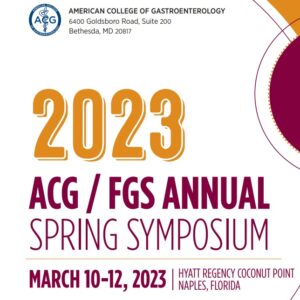March 2023 Newsletter
Pancreas Overview
Responsible for the manufacture of hormones and enzymes, the pancreas is susceptible to three major health concerns: Diabetes, pancreatitis and pancreatic cancer. As the pancreas plays a major role in digestion (via enzyme production) and managing energy, appetite, and acid control (via hormone production). imbalances often affect quality of life and patients often have to undergo a variety of tests before medical professionals arrive at a diagnosis.
March Highlight
This month, we’re highlighting a case study in which a patient with a history of persistent hypercalcemia presented to the emergency department with indigestion and abdominal pain. After performing a CT scan, the patient was found to have primary hyperparathyroidism and referred for further testing. Despite undergoing surgery and placed on a two-month trial of H2 blockers and PPIs, symptoms persisted. At this point, doctors began suspecting a different culprit was responsible.
March Case Study
A 42-year-old female with a seven-month history of persistent hypercalcemia presented to the emergency department with dyspepsia and acute right flank abdominal pain. A CT of the abdomen and pelvis showed nephrolithiasis (kidney stones) as well as masses in the pancreatic tail and right adrenal gland. Patient was also found to have hyperparathyroidism and referred to genetic testing for suspected MEN1 syndrome and was found to have a mutation of the MEN1 gene on chromosome 11q13.

MEN1 syndrome is a rare autosomal dominant condition defined by the development of neuroendocrine tumors throughout the body. The most common sites involved include the parathyroid, pituitary, and pancreas, although the duodenum and adrenals are also affected. Patients with MEN1 are at high risk of developing Zollinger-Ellison Syndrome (ZES) due to the growth of gastrinomas leading to hypersecretion of acid. Roughly 85% of patients with ZES, as a consequence of MEN1, have duodenal gastrinomas.
After the results of genetic testing, the patient underwent distal pancreatectomy and right inferior parathyroidectomy. She then developed symptoms consistent with gastroesophageal reflux, presenting high gastrin levels. A two-month trial of H2 blockers and PPIs was initiated, but met with very limited improvement in symptoms, subsequently leading to the suspicion of a gastrinoma within the head of the pancreas.
The patient was referred to GI for possible gastric outlet obstruction and was found to have diffuse esophagitis with multiple gastric and duodenal ulcers on esophagogastroduodenoscopy (EGD). Dotatate PET/CT scan was obtained which showed intense uptake in the second and third portions of the duodenum as well as in the uncinate process of the pancreas with accompanying calcifications, again raising concern for gastrinoma.
This was also supported by a positive secretin stimulation test (SST).
She then underwent endoscopic ultrasound (EUS) with fine-needle aspiration (FNA) of the uncinate process which was negative for malignancy and no discrete masses were appreciated.
Given that gastrinomas can be very difficult to localize and EUS is generally recommended when surgical excision is
being considered, as it is superior to CT imaging modalities in tumor localization, repeat EUS with biopsy of the duodenum was scheduled, with plans to proceed to surgical excision of the gastrinoma once identified in order to prevent metastatic spread.
Currently, there are no general guidelines on the treatment and management of medically refractory ZES in the setting of MEN1 in which gastrinoma cannot be localized as surgical excision is not possible until a discrete mass is identified. This factor, and the high morbidity and mortality of ZES, reinforces the need to screen patients with MEN1 presenting with acute abdominal pain and dyspepsia for ZES.
The study concludes that physicians should have a low threshold to screen for ZES in MEN1 patients complaining of gastric reflux or dyspepsia with a gastrin level, chromogranin A level, and EGD in order to allow for early diagnosis and reduce the potential of developing life-threatening complications of ZES.
Sources: Martino BR, Manibusan P. Zollinger Ellison Syndrome Refractory to Medical Therapy in the Setting of Multiple Endocrine Neoplasia Type I. Cureus. 2022 Jun 30;14(6):e26468. doi: 10.7759/cureus.26468. PMID: 35919366; PMCID: PMC9338823.
National Pancreas Foundation Virtual Education
Did you know the National Pancreas Foundation hosts free webinars every month? They host multiple virtual events every month, with different topics and speakers from varying fields and concentrations. Next week’s topic is How to Improve Communication with Healthcare Providers.
The webinar is scheduled to go live Wednesday March 22, 2023 at 7:00 PM.
Conference Update

March 10 – 12 | 2023 ACG/FGS Annual Spring Symposium | Hyatt Regency Coconut Point | Naples, FL
We attended Florida Gastro and caught up on the latest clinical updates in gastroenterology. Additionally, we got a chance to touch-base with our representatives in the area. We paid particular attention to the late morning Pancreatobiliary session on Saturday, especially the talks concerning the evaluation and management of pancreatic duct structures.
Physicians can get better visual images of the pancreas and ductal structures with ChiRhoStim by using Secretin stimulation from the pancreatic fluid and bicarbonate. EUS and quantitative measurement of the pancreas with Secretin are also possible. Learn more.
Future Events
March 31 – April 2
17th Annual NPF Fellows Symposium | Hilton La Jolla Torrey Pines | La Jolla. CA
Contact Wade Schoenecker for more information on where to find us!
